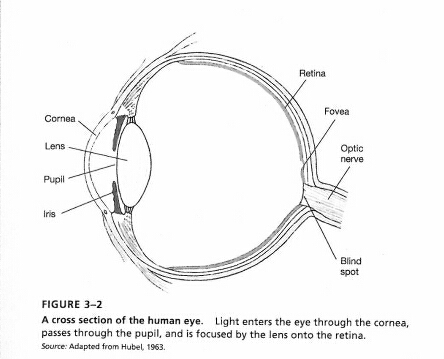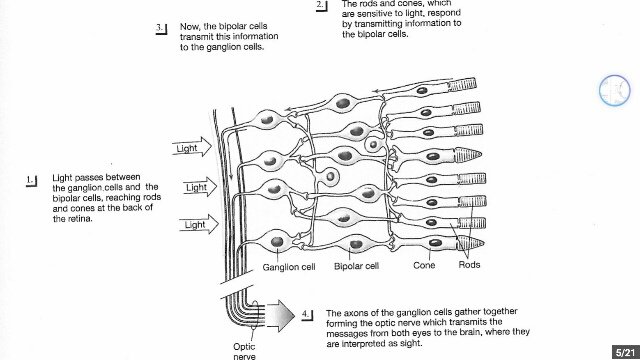HUMAN EYES

The human eye is very complex, which gives no room for being constructed out of chance as being proclaimed by many Atheists. You don't believe in the existence of God, that doesn't mean the nature doesn't prove his existence. We find this glaring fact, in our Holy Bible.
[[Rom 1:20]] ASV For the invisible things of him since the creation of the world are clearly seen, being perceived through the things that are made, even his everlasting power and divinity; that they may be without excuse:
Light enters the eye through the Cornea and passed through the pupil, and it is focused by the lens on to the Retina.
(Hubbell 1963)
The Cornea: The transparent protective coating over the front Part of the eye.
The Pupil: a small opening in the Iris through which light enters the eye.
Iris: the coloured part of the eye, which regulates the size of the pupil.
Len: the transparent part of the eye behind the pupil that focuses light on to the retina.
Fevea: the area of the retina that's the centre of the visual field.
The Retina contains the receptor cells responsible for the vision. We have two kinds of receptor cells - Rods and Cones. About 120 Millions Rods and 8 Millions Cones are present in the retina of each eye. Rods and Cones differ from each other in functions, Rods are mainly responsible for night vision, response onto to varying degrees of light and darkness. Cones allow us to see colours, and operate chiefly in the day night.
What kind of natural selection or Chance took note of the existence of Night and Day (Light and Darkness) , thus designed the eye to be adjusting in different degrees of Light and Dark?
Vision adaptation occurs as the sensitivity of Rods and Cones changes according to the amount of light available. We have light and Dark adaptation.
Dark Adaptation: increase the sensitivity of Rods and Cones in darkness.
Light adaptation: decreases the sensitivity of Rods and Cones in bright light.

Rods: Receptor cells in the retina responsible for night vision and perception of brightness.
Cones: Receptor cells in the retina responsible for vision.
Bipolar cells: neurons that have only one axon and one dendrite; in the eye, these neurons connect the receptors on the retina to the ganglion cells.
Visual Acuity: the ability to distinguish the fine details visually.
A close-up of the layers of Retina. Light must pass between the ganglion cells and bipolar cells to reach the Rods and Cones. The sensory image, then travels back out of the receptor cells via the bipolar cells to the ganglion cells. The Axons of the ganglion cells gather together to form the optic nerve, which carries the message from both eyes to the brain.
In the next article, we will explore how the messages are being sent from the eyes to the brain and interpreted. All to the Glory of the Designer.
[[Rom 1:20]] ASV For the invisible things of him since the creation of the world are clearly seen, being perceived through the things that are made, even his everlasting power and divinity; that they may be without excuse: